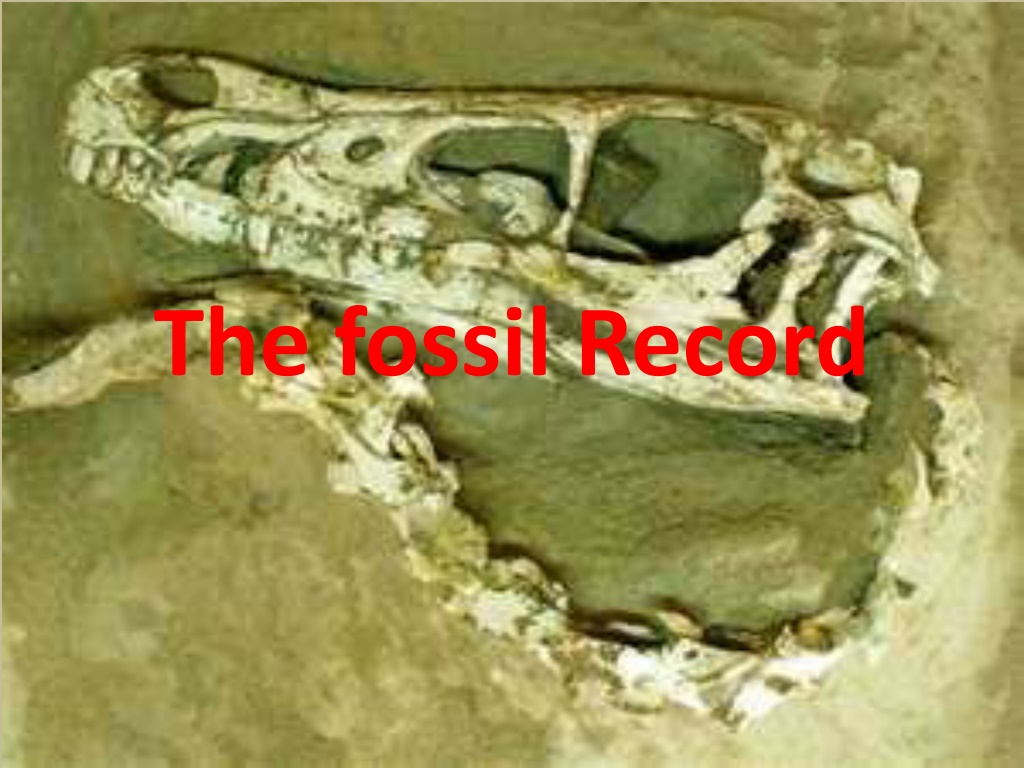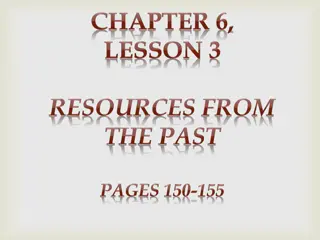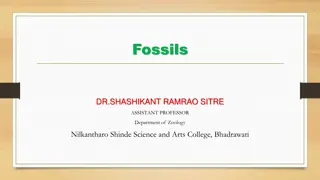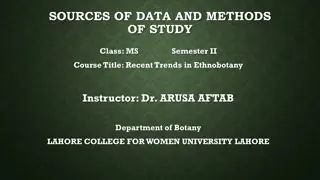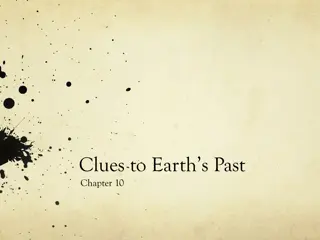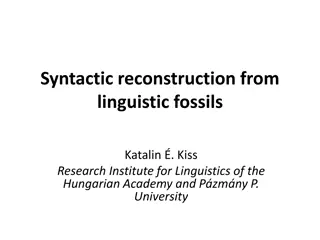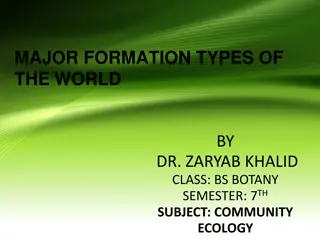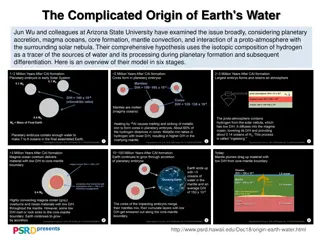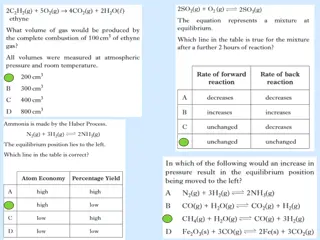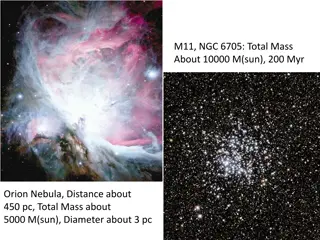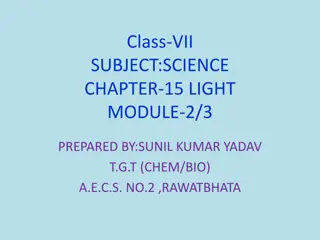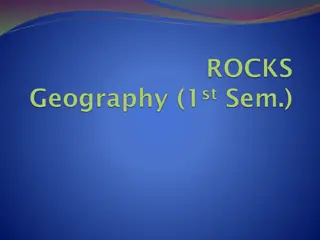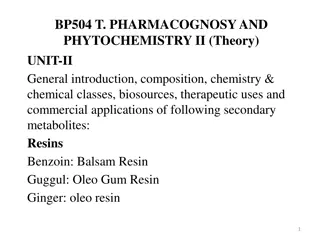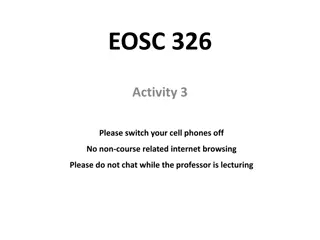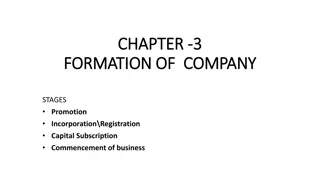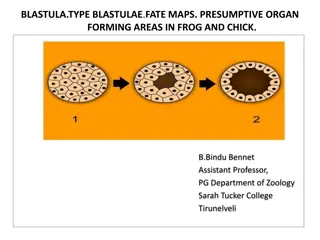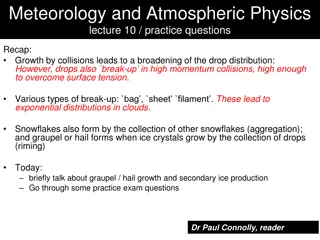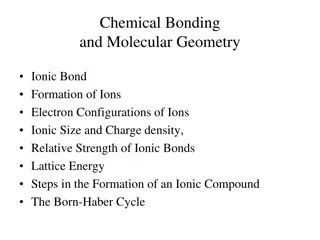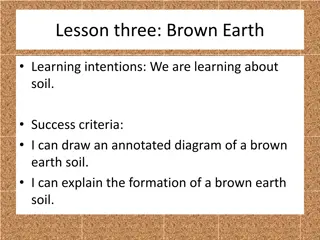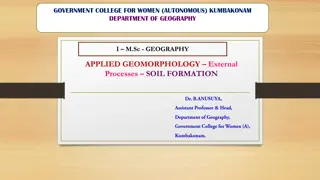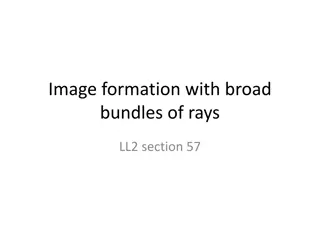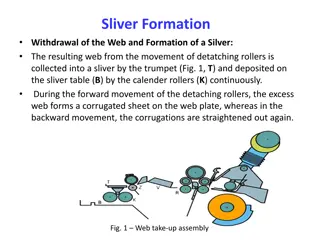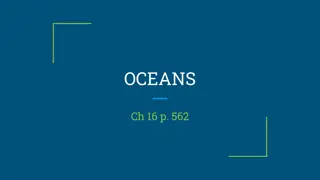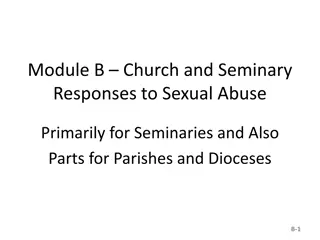Understanding Fossils: Formation, Types, and Significance
Explore the world of fossils and learn about their formation process, different types such as mold, cast, and petrified fossils, and the valuable insights they provide to scientists. Discover how fossils capture the remains of ancient plants and animals, revealing clues about the past through their imprints and structures. Uncover the methods scientists use to determine fossil ages and gain a deeper understanding of the fascinating world of paleontology.
Download Presentation

Please find below an Image/Link to download the presentation.
The content on the website is provided AS IS for your information and personal use only. It may not be sold, licensed, or shared on other websites without obtaining consent from the author. Download presentation by click this link. If you encounter any issues during the download, it is possible that the publisher has removed the file from their server.
E N D
Presentation Transcript
What we will learn about Fossils? We will learn how fossils form? What types of fossils exist? How do scientists determine the age of fossils? What do fossils reveal to scientists?
What is a fossil? Fossils are the remains or imprints left behind from plants and animals. They can be whole parts of an animal, or just pieces of their remains. They can also include evidence of movement of animals, such as footprints or imprints.
How do fossils form? In order for a fossil to form, an animal or plant must be trapped into a material. In many instances, fossils are found in sediment. Layers of sediment will envelop the remains; This can continue for thousands of years.
How do fossils form? The actual remains that are found aren't the animal or plant at all. Instead, the remains begin to decay within the sediment. Minerals then replace the space that was once the remains. The mineral hardens and makes an impression of the animal or plant. What is left is what is known as a fossil.
What parts of an organisms remains will form a fossil? The soft parts of an animal or plant decay more quickly than its hard parts, therefore teeth and bones are more likely to be preserved than skin, tissues, and organs.
Types of fossils: Mold fossils Cast fossils Petrified fossils
Mold Fossil A mold is a type of fossil formed when a shell or other hard part of an organism dissolves leaving an empty space or imprint of that organism. How is a mold formed: A shell can make an imprint in sand. After the sand begins to harden, the shell might dissolve, leaving a space shaped like the shell in the rock. The space in the rock is a mold fossil. When the sediments harden into rock, they form a fossil that has the same shape as the shell that made the mold.
Cast Fossil When the space of the mold becomes filled in with minerals it will form a cast. http://www.classzone.com/books/earth_science/terc/content/visualizations/es2901/es2901page01.cfm
Petrified fossils Is a fossil formed when the minerals slowly replace all or part of an organism.
Organisms are preserved in substances other than sediments: Organisms such as the Mammoth have been perfectly preserved in ice. Insects like mosquito s have been preserved in sap of trees, called amber.
Fossil Record Record of all of the millions of fossils found Scientists look for similarities between living organisms and fossils.
Fossil Record It provides evidence about the history of life on Earth and how different groups of organisms, including species, have changed over time.
To understand how living things have changed through time, scientists need to be able to determine the age of the fossil. Scientists can determine fossils age in two ways: 1. Relative dating 2. Radioactive dating The fossil record provides information about species that are ________________ (or have died out).
Relative dating: Scientists look at where the rock is located. The older layers are deeper than the layers above. This method only provides an estimated age of a fossil. The Exact age cannot be determined; you can only say that something appears earlier or later than something else.
Relative dating - It determines which of the two fossils is older. Youngest fossil Oldest Fossil
Radioactive dating: Scientists determine the actual age of a sample based in the amount of remaining radioactive isotopes it contains. Calculations are based on half-life the time it takes for of the radioactive sample to decay Two vocabulary terms associated with radioactive dating are: Half-life the time it takes for half of the atoms in a radioactive element to decay. Radioactive element An unstable element that breaks down into a different element. These elements are used in nuclear fission to produce energy that we use in electricity.
Radioactive dating example: Naturally-occurring radioactive materials break down into other materials at known rates. This is known as radioactive decay. Radioactive parent elements decay to stable daughter elements. Radioactivity decay to measures the age of rocks and minerals.
Radioactive decay occurs at a constant exponential or geometric rate. The rate of decay is proportional to the number of parent atoms present.
What the graph tells us: The proportion of parent to daughter tells us the number of half-lives, which we can use to find the age in years. For example, if there are equal amounts of parent and daughter, then one half-life has passed.
Problem One: 100 90 80 % 70 60 C-14 50 N-14 40 30 20 10 0 0 1 2 3 4 5 6 7 8 9 10 1. If a sample contains 50g of Carbon-14 and 50g of Nitrogen-14, how many half-lives has it undergone? 1 1. If a sample contains 25g of Carbon-14 and 75g of Nitrogen-14, how many half-lives has it undergone? 2 Number of Half-lives
Problem 2: Using the graph below, which shows the generalized rate of decay of radioactive isotopes over 5 half- lives answer the following question: If the original mass of a radioactive isotope was 24 grams, how many grams would remain after 3 half-lives? a) b) 24 c) d) 6 12 3 Answer = 3
Problem 3: The diagram below represents the present number of decayed and un-decayed atoms in a sample that was originally 100% radioactive material. If the half-life of the radioactive material is 1,000 years, what is the age of the sample represented by the diagram? a. 1,000 yr b. 2,000 yr c. 3,000 yr d. 4,000 yr Answer = 2,000 years
Problem 4: The graph below shows the rate of decay of the radioactive isotope K-40 into the decay products Ar-40 and Ca-40. An analysis of a basalt rock sample shows that 25% of its radioactive K-40 remained un-decayed. How old is the basalt? a. 1.3 billion years b. 2.6 billion years c. 3.9 billion years d. 4.6 billion years Answer = 2.6 billion years
Problem 5: The diagram below represents a model of a radioactive sample with a half-life of 5000 years. The white boxes represent un-decayed radioactive material and the shaded boxes represent the decayed material after the first half-life. How many more boxes should be shaded to represent the additional decayed material formed during the second half-life? a. b. c. d. 12 3 6 0 Answer = 6
